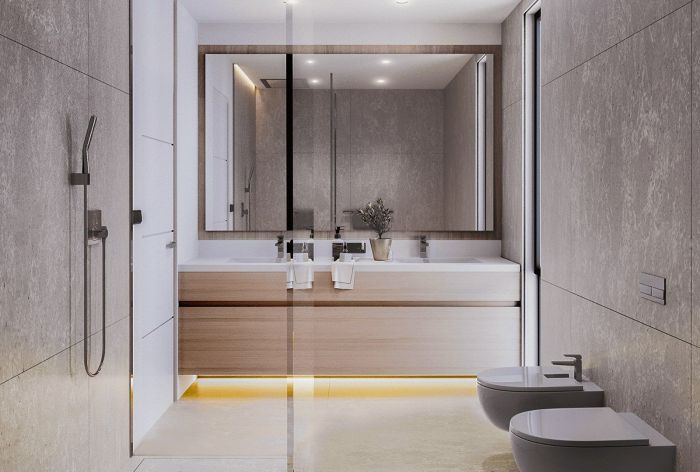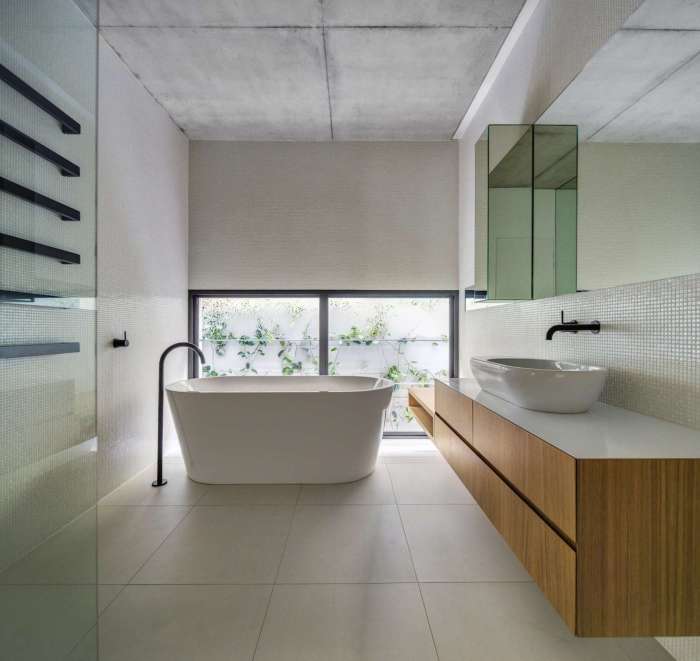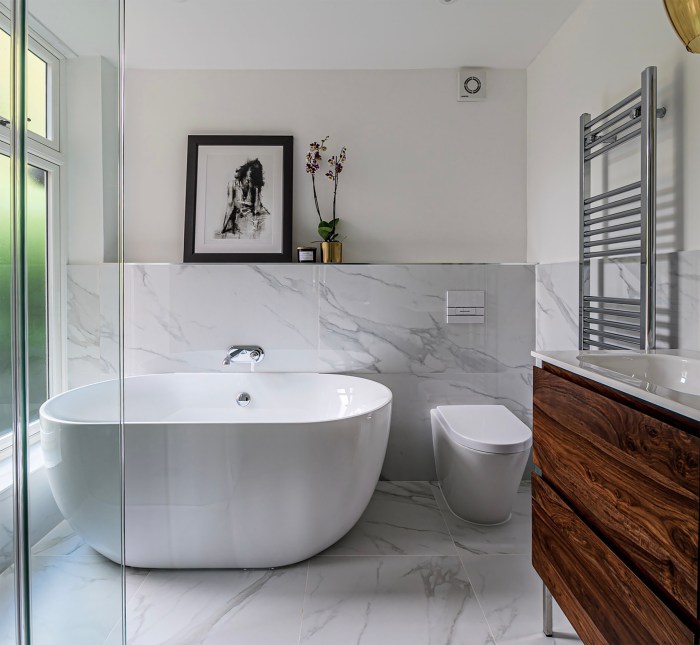In the realm of interior design, minimalism has emerged as a philosophy that emphasizes simplicity, functionality, and the elimination of excess. This approach has found its way into various aspects of home design, including bathrooms. Minimalist bathroom designs offer a range of benefits, including a sense of tranquility, increased functionality, and reduced maintenance.
In this article, we will delve into the key elements of minimalist bathroom design, provide guidance on planning a minimalist bathroom, and showcase inspiring case studies.
By embracing minimalist principles in bathroom design, homeowners can create a space that is both aesthetically pleasing and highly functional. The clean lines, neutral color palettes, and natural materials characteristic of minimalism create a calming and inviting atmosphere. Furthermore, the emphasis on functional storage solutions and decluttering helps to maximize space and minimize clutter, making the bathroom a more enjoyable and efficient space to use.
Introduction
Minimalist bathroom designs embrace the concept of simplicity and functionality. They prioritize clean lines, neutral colors, and a clutter-free environment to create a serene and spacious ambiance.
Incorporating minimalist principles into bathroom design offers numerous benefits. It enhances visual appeal, promotes a sense of calm, and simplifies cleaning and maintenance.
Benefits
- Enhanced Visual Appeal: Minimalist designs emphasize clean lines and neutral colors, resulting in a visually pleasing and uncluttered space.
- Sense of Calm: The absence of excessive clutter and ornamentation creates a tranquil atmosphere that promotes relaxation and rejuvenation.
- Simplified Cleaning and Maintenance: Minimalist bathrooms are easier to clean and maintain due to their reduced number of surfaces and lack of intricate details.
Elements of Minimalist Bathroom Design
Minimalist bathroom design is characterized by clean lines, simple shapes, and a neutral color palette. The goal is to create a space that is both functional and visually appealing.Key elements of minimalist bathroom design include:
- Clean lines and simple shapes: Avoid unnecessary ornamentation and focus on creating a streamlined look.
- Neutral color palettes: White, black, and gray are popular choices for minimalist bathrooms, as they create a sense of calm and serenity.
- Natural materials: Stone, wood, and glass are all popular choices for minimalist bathrooms, as they add a touch of warmth and texture.
- Functional storage solutions: Built-in shelves and drawers can help to keep your bathroom organized and clutter-free.
Planning a Minimalist Bathroom
Planning a minimalist bathroom requires careful consideration of essential elements, fixtures, finishes, organization, and decluttering. By focusing on simplicity, functionality, and space optimization, you can create a serene and aesthetically pleasing bathroom.
The first step is to determine the essential elements you need. This includes a sink, toilet, shower or bathtub, and storage for essentials. Choose fixtures and finishes that complement the minimalist aesthetic, such as clean lines, neutral colors, and natural materials.
Organizing and Decluttering
Organization and decluttering are crucial in a minimalist bathroom. Use shelves, drawers, and baskets to store items and keep surfaces clear. Consider using clear containers to easily identify contents and maintain a sense of order.
Case Studies
To illustrate the transformative power of minimalist bathroom design, let’s explore a few case studies that showcase well-executed examples.
These before-and-after transformations demonstrate how decluttering, incorporating clean lines, and maximizing natural light can create a serene and functional space.
Example 1: Tranquil Oasis
- Before: A cluttered bathroom with outdated fixtures and a cramped layout.
- After: A serene space with a floating vanity, a large mirror, and a walk-in shower. The neutral color palette and natural light create a calming atmosphere.
Example 2: Modern Farmhouse
- Before: A dated bathroom with dark wood cabinetry and a lack of storage.
- After: A modern farmhouse-inspired bathroom with white shiplap walls, a custom vanity with ample storage, and a freestanding tub. The black hardware and vintage-style mirror add a touch of charm.
Example 3: Coastal Escape
- Before: A small bathroom with limited natural light and a bulky shower.
- After: A coastal-inspired bathroom with a frameless glass shower, a floating vanity with built-in storage, and a large window that floods the space with natural light. The white and blue color scheme evokes a sense of relaxation and tranquility.
Conclusion
By embracing minimalist principles, you can create a bathroom that is both stylish and functional. Remember, the key is to focus on what you need and eliminate anything that is unnecessary. With a little planning, you can create a minimalist bathroom that you’ll love for years to come.
Closure
In conclusion, minimalist bathroom designs offer a unique combination of style, functionality, and tranquility. By incorporating minimalist principles into bathroom design, homeowners can create a space that is both visually appealing and highly practical. Whether you are renovating an existing bathroom or designing a new one from scratch, consider embracing minimalism to create a serene and uncluttered sanctuary in your home.



